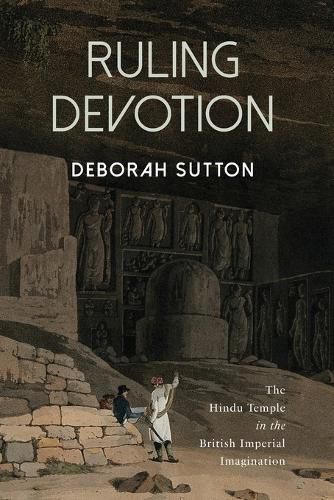Readings Newsletter
Become a Readings Member to make your shopping experience even easier.
Sign in or sign up for free!
You’re not far away from qualifying for FREE standard shipping within Australia
You’ve qualified for FREE standard shipping within Australia
The cart is loading…






This title is printed to order. This book may have been self-published. If so, we cannot guarantee the quality of the content. In the main most books will have gone through the editing process however some may not. We therefore suggest that you be aware of this before ordering this book. If in doubt check either the author or publisher’s details as we are unable to accept any returns unless they are faulty. Please contact us if you have any questions.
Combines historical, literary, art historical, and archaeological perspectives to explore the idea of the Hindu temple in the British colonial imagination.
A History Today's 2024 Book of the Year
From 1800 onwards, the Hindu temple occupied a fragile and uneasy proximity to Imperial governance in India. The colonial state sought to regulate and extract the wealth of large temples. Imperial scholars classified the extraordinary diversity of architectural forms from across India, and selected temples were defined as monuments and brought into the custody of Imperial archaeology. Over time, the Imperial literary imagination transformed the Hindu temple from a place of worship and devotion into a space of wealth, sensuality, and violence. However, the Hindu temple also tested the Imperial state. Devotees and trustees manipulated and rejected attempts at governance, and the Hindu temple became a site at which the authority of the state was persistently modified or curtailed. Ruling Devotion combines historical, literary, art historical, and archaeological perspectives to explore the idea of the temple in particular localities, through the formation of pan-British-Indian policy and in the broadest of transnational realms of Imperial culture. Drawing on a huge range and diversity of archival materials, the book explores the preoccupations and frailties of the colonial state in India.
$9.00 standard shipping within Australia
FREE standard shipping within Australia for orders over $100.00
Express & International shipping calculated at checkout
This title is printed to order. This book may have been self-published. If so, we cannot guarantee the quality of the content. In the main most books will have gone through the editing process however some may not. We therefore suggest that you be aware of this before ordering this book. If in doubt check either the author or publisher’s details as we are unable to accept any returns unless they are faulty. Please contact us if you have any questions.
Combines historical, literary, art historical, and archaeological perspectives to explore the idea of the Hindu temple in the British colonial imagination.
A History Today's 2024 Book of the Year
From 1800 onwards, the Hindu temple occupied a fragile and uneasy proximity to Imperial governance in India. The colonial state sought to regulate and extract the wealth of large temples. Imperial scholars classified the extraordinary diversity of architectural forms from across India, and selected temples were defined as monuments and brought into the custody of Imperial archaeology. Over time, the Imperial literary imagination transformed the Hindu temple from a place of worship and devotion into a space of wealth, sensuality, and violence. However, the Hindu temple also tested the Imperial state. Devotees and trustees manipulated and rejected attempts at governance, and the Hindu temple became a site at which the authority of the state was persistently modified or curtailed. Ruling Devotion combines historical, literary, art historical, and archaeological perspectives to explore the idea of the temple in particular localities, through the formation of pan-British-Indian policy and in the broadest of transnational realms of Imperial culture. Drawing on a huge range and diversity of archival materials, the book explores the preoccupations and frailties of the colonial state in India.